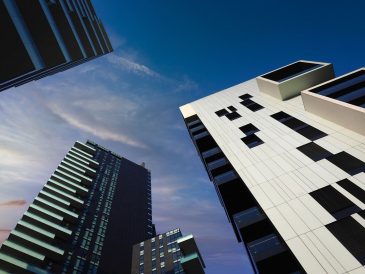If you own a building or are involved in property management, you might have come across a term called “tuckpointing” but perhaps didn’t know exactly what it entails or why it’s critical. Tuckpointing is not just about aesthetics; it plays a significant role in maintaining structural integrity and prolonging the lifespan of a building. Here’s all you need to know about tuckpointing and why it’s essential for both residential and commercial properties.
Key Principles of Tuckpointing
Tuckpointing is a method of repairing damaged mortar in brickwork. The process involves removing the old mortar and replacing it with new mortar, precisely matched to the color of the bricks, often followed by embedding a thin line (a ‘tuck’) of contrasting color in the center. The result is a neat and uniform look that gives the impression of very fine joints within the brickwork.
Why Is Tuckpointing Crucial?
The technique originated in the late 17th century in England and was devised as a cost-effective way to mimic the appearance of high-end rubbed brickwork. Over the centuries, tuckpointing has evolved into a crucial maintenance practice that extends beyond aesthetics to increase the longevity of masonry structures.
Tuckpointing goes beyond just fixing the appearance of a building. Here are some reasons why it’s crucial:
-
Structural Integrity: By repairing and strengthening the mortar, tuckpointing helps sustain the structural stability of the building.
-
Weatherproofing: Proper mortar joints keep out water, which can cause extensive structural damage over time.
-
Energy Efficiency: Tuckpointing can reduce drafts and increase thermal efficiency by sealing old and worn-out mortar joints.
-
Property Value: A well-maintained building has a higher value than one with structural weaknesses. Regular tuckpointing can improve the aesthetic value and the physical state of your property.
The Part Tuckpointing Plays in Enhancing Buildings’ Aesthetics
While tuckpointing is essential for structural and protection reasons, it’s also incredibly impactful aesthetically. This procedure can significantly enhance the visual appeal of a building, making it look newer and more cared for. The sharp lines and contrast provided by expert tuckpointing work can transform an aging structure into a standout feature in any neighborhood or cityscape.
For these reasons, many property owners looking for residential and commercial tuckpointing services realize that this maintenance is not only a crucial part of building upkeep but also a smart investment in their property’s future.
Signs Your Building Might Need Tuckpointing
-
Cracking Mortar: Small cracks in the mortar joints can eventually escalate into bigger problems if not addressed.
-
Deteriorating Mortar: Mortar that has become soft or which is crumbling away certainly needs attention.
-
Loose Bricks: Bricks that move when touched or have visible gaps around them need resetting, which involves tuckpointing.
-
Water Entry: If you see signs of moisture inside your building, it might be due to failing mortar joints.
The Tuckpointing Process
The steps in the tuckpointing process involve the following:
-
Assessment: A professional thoroughly assesses the extent of damage to your building’s mortar.
-
Removal: Damaged mortar is carefully removed using tools like grinders and chisels.
-
Filling: New mortar is then placed into the clean joints, carefully matched to the color of the existing bricks.
-
Finishing Touch: A contrasting mortar line is sometimes added to create the traditional tuckpointing effect.
This restoration method is generally recommended every 25-30 years to maintain the optimal condition of the masonry.
Choosing the Right Materials and Professionals
Selecting the correct type of mortar is crucial in tuckpointing. The new mortar must match the historic profile in color, compressive strength, and permeability to ensure it blends seamlessly and functions correctly with the brickwork. Equally important is choosing skilled professionals who specialize in masonry repairs. Working with experts like a tuckpointing company Chicago ensures that the work is done correctly and with high standards.
How Often Should Tuckpointing Be Done?
The frequency of tuckpointing depends on various factors, such as the building’s exposure to harsh weather, the quality of the original materials and artistry, and the building’s geographic location. However, as a general guideline, it’s a good idea to inspect your brickwork every year and consider tuckpointing every two to three decades or so.
Special Considerations in Specific Regions
In areas with specific climatic conditions, such as those experienced in Cook County, the type of material and the techniques used might need to vary. This adaptation ensures that the restoration work caters adequately to localized weather patterns and environmental factors. Thus, it’s always wise to work with local professionals who understand the regional nuances. Check out tuckpointing Skokie for your next masonry project.
Final Words
Tuckpointing is a crucial maintenance strategy that not only helps keep your building sound structurally but also boosts its overall aesthetic appeal. Ensuring that it’s done properly can save you a significant amount of money in potential repairs and enhance the building’s value and appeal. Regular checks and timely updates to the mortar can help in preserving the heritage and strength of your building for many years to come.
With its ability to prevent future extensive damage and uplift the appearance, tuckpointing stands as an essential practice for any building owner to consider.


